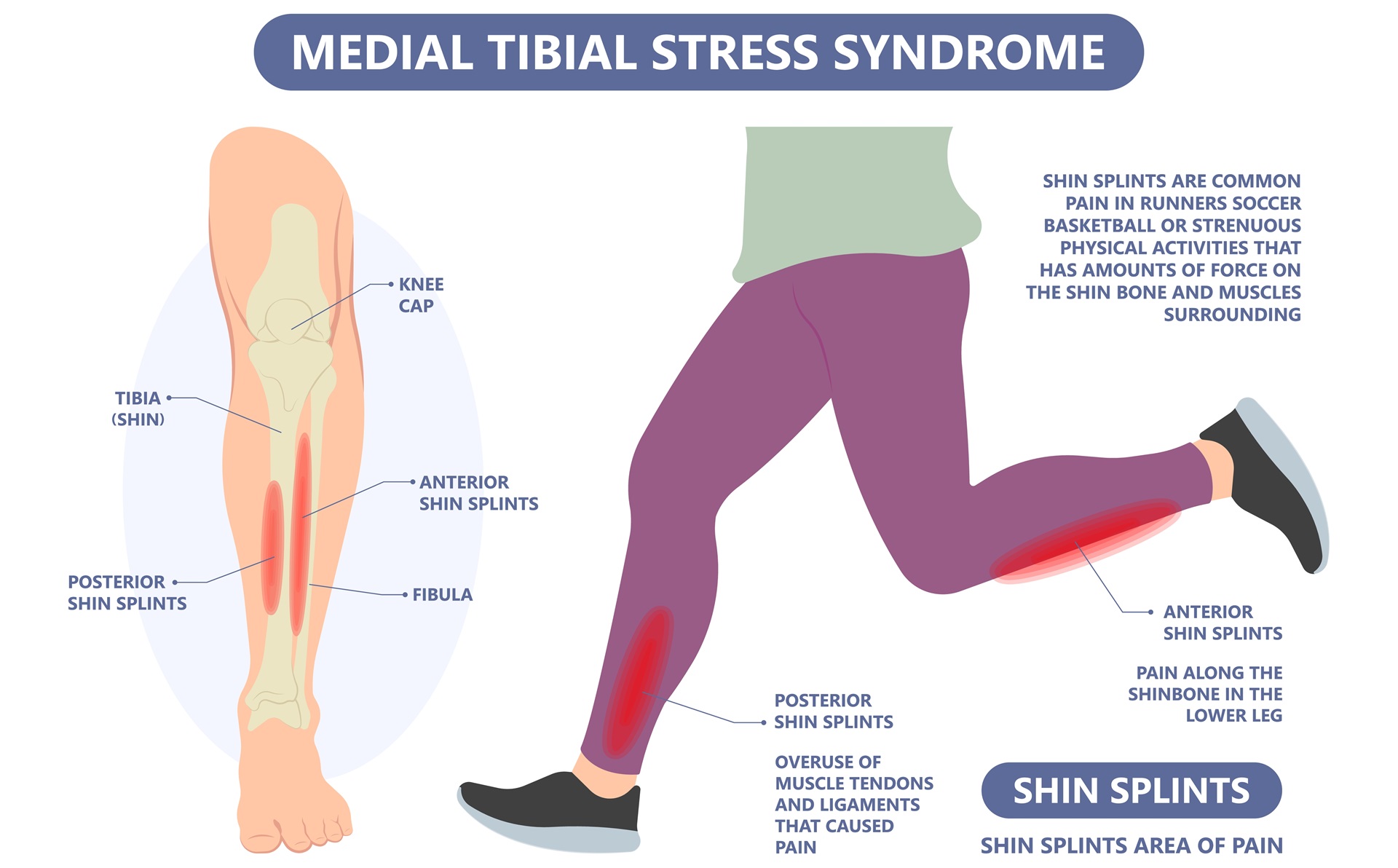Medial Tibial Stress Syndrome/Shin Splints

What is Medial Tibial Stress Syndrome (MTSS) or Shin Splints?
Medial tibial stress syndrome, commonly known as shin splints, refers to pain and inflammation along the inner edge of the shinbone (tibia). It is a common overuse injury that affects athletes, particularly runners, dancers, and military recruits. Shin splints occur when the muscles, tendons, and bone tissue around the tibia become inflamed, typically due to repetitive stress and strain. While shin splints are not a serious condition, they can be painful and, if left untreated, may progress to more severe injuries such as stress fractures.
Symptoms of Shin Splints
Shin splints are characterised by pain along the inner side of the shinbone, usually in the lower half. Symptoms can vary from mild discomfort to severe pain that limits activity. Common symptoms include
- Aching or Throbbing Pain: Pain that is often described as a dull ache or throbbing sensation along the inner shin.
- Tenderness and Swelling: The affected area may be tender to the touch, and swelling may occur in some cases.
- Pain During and After Exercise: Pain typically starts during physical activity and may worsen It is often most severe at the beginning of exercise, subsides during activity, and returns afterward.
- Worsening Pain with Continued Activity: As the condition progresses, pain may become more constant and occur even with minimal activity or at rest.
Causes of Shin Splints
Shin splints are primarily caused by repetitive stress and strain on the shinbone and the tissues attached to it. Contributing factors include
- Overuse and Overtraining: A sudden increase in training intensity, duration, or frequency can overload the muscles and bones of the lower leg.
- Improper Footwear: Wearing shoes that lack proper support or cushioning can increase the risk of shin splints.
- Flat Feet or High Arches: Abnormal foot mechanics, such as overpronation (flat feet) or supination (high arches), can increase stress on the lower leg.
- Running on Hard or Uneven Surfaces: Hard surfaces like concrete or uneven terrain can increase the impact on the shin, leading to shin splints.
- Lack of Flexibility or Muscle Imbalance: Tight calf muscles or weak stabilising muscles in the lower leg can contribute to the development of shin splints.
Management of Shin Splints
The treatment of shin splints focuses on relieving pain, reducing inflammation, and preventing recurrence. Common management strategies include
- Rest and Activity Modification: Resting the affected leg and avoiding high-impact activities that exacerbate the pain are crucial for recovery. Low-impact exercises like swimming or cycling can help maintain fitness without straining the shin.
- Ice Therapy: Applying ice packs to the affected area for 15-20 minutes several times a day can help reduce pain and inflammation.
- Supportive Footwear and Orthotics: Wearing proper shoes with good arch support and cushioning, or using custom orthotics, can help correct foot mechanics and reduce strain on the shin.
- Stretching and Strengthening Exercises: Stretching exercises for the calf muscles and Achilles tendon can improve flexibility, while strengthening exercises for the lower leg muscles can improve stability and reduce the risk of recurrence.
- AND Many More!
Why See a Podiatrist for Shin Splints?
A podiatrist plays a vital role in diagnosing and treating shin splints. They can assess foot biomechanics, identify contributing factors, and develop a personalised treatment plan to address the root cause of the condition. A podiatrist can recommend appropriate footwear, provide custom orthotics to correct alignment issues, and guide rehabilitation exercises. By addressing the underlying causes and providing expert care, a podiatrist can help prevent recurrence and ensure a safe return to physical activity.
